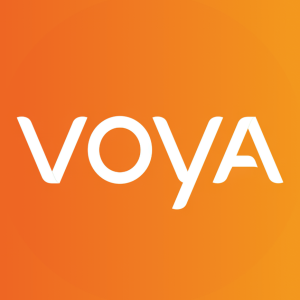Voya Releases New Whitepaper Providing Plan Design Changes for Employers During Challenging Times
Voya Financial, Inc. (NYSE: VOYA), is releasing a new whitepaper from its Voya Behavioral Finance Institute for Innovation that provides employers with actionable insights to help individuals get back on track with retirement savings in light of the COVID-19 pandemic and associated economic crisis. In the new paper titled “Plan design during challenging times: 7 Actionable Insights from Behavioral Finance,” Dr. Shlomo Benartzi, UCLA Anderson School of Management professor emeritus and a senior academic advisor to the Voya Behavioral Finance Institute for Innovation, examines several retirement plan design considerations for employers that can significantly help improve the financial security of American workers today.
According to research from Voya, the percentage of retirement participants with a positive retirement sentiment fell by 13 points in March 2020, from
“There’s no denying that COVID-19 has created financial challenges for American workers and companies alike, but as a result, employees are seeking greater support from their employers in helping them to address their health and wealth needs,” said Charlie Nelson, CEO of Retirement and Employee Benefits for Voya Financial. “And while many individuals have had no choice but to withdraw funds from their retirement savings, there are many opportunities for employers to implement solutions that can help individuals get back on track, starting with small changes to the design of their retirement plan program.”
Specifically, the new whitepaper outlines seven actionable changes that employers can make to their retirement plans to help employees accumulate savings once the current hardship is over. While many individuals might need access to their hard-earned nest egg now, withdrawing funds from one’s retirement savings will require saving even more to help achieve a secure financial future. As a result, employers have an opportunity to help. Among the actionable plan design considerations, some of the key changes include:
-
Increasing auto-enrollment deferral rates to
7% : Prior research has found it is possible to significantly increase suggested savings rates without increasing the number of participants opting out of the retirement plan. Specifically, suggesting rates between7% and10% did not result in lower enrollment when compared to a6% control rate.3 By raising the auto-enrollment deferral rates, employers can make it easier for workers to build up their savings, even if they occasionally are forced to make hardship withdrawals. -
Boosting the escalator cap to
15% : Recent regulatory changes in the Setting Every Community Up for Retirement Enhancement (SECURE) Act encourage retirement plans to raise the cap on auto-escalated savings rates from10% to15% , thus allowing workers to save at a higher level when necessary. This is especially important for those workers who have made hardship withdrawals as they are likely to need higher savings rates to achieve financial security. -
Considering the stretch match: In a typical stretch match, employers reduce their match rate while increasing their match cap. For example, instead of offering 50 cents on the dollar up to
6% of pay, employers could offer 25 cents up to10% or15% of pay — a timely solution as it enables employers to shift a portion of their matching costs into the future, after the economy recovers.
“The current crisis is also an opportunity to improve plan design and boost the financial security of American workers,” said Benartzi. “Every worker deserves to benefit from these insights, which is why plan sponsors should apply these design changes holistically — and include both full- and part-time, and new and existing employees.”
“The events of today have been a reminder to us all that financial security is paramount,” added Nelson. “While retirement savings is a key component of financial security, employers should also look to provide support through their broader wellness solutions to help offset the burden of competing health and wellness priorities. This includes things like emergency savings, student loan debt support and access to voluntary benefits such as protection for unexpected critical illnesses, accidents or hospital stays, particularly in light of the global health crisis.”
Voya’s Behavioral Finance Institute for Innovation is focused on gaining deeper insights into the decisions of American workers regarding their financial and retirement planning activities. By merging behavioral science with the speed and scale of the digital world, the institute seeks to create large-scale solutions designed to help improve individual retirement outcomes. For more information and to view the findings from the current whitepaper or past studies, please visit Voya.com/behavioralfinance.
As an industry leader and advocate for greater retirement readiness, Voya Financial is committed to delivering on its vision to be America’s Retirement Company® and its mission to make a secure financial future possible — one person, one family, one institution at a time.
1. Voya internal data.
2. 2020 PSCA Survey https://www.psca.org/press-room/CARES_snapshot
3. Beshears, John, Shlomo Benartzi, Richard T. Mason, and Katherine L. Milkman. "How Do Consumers Respond When Default Options Push the Envelope?" (SSRN #3050562) 2017.
4. Despite the industry typically using
5. Bhargava, Saurabh, Lynn Conell-Price, Richard Mason, and Shlomo Benartzi. "Save (d) by Design." (2018).
About Voya Financial®
Voya Financial, Inc. (NYSE: VOYA), helps Americans plan, invest and protect their savings — to get ready to retire better. Serving the financial needs of approximately 13.8 million individual and institutional customers in the United States, Voya is a Fortune 500 company that had
VOYA-RET
View source version on businesswire.com: https://www.businesswire.com/news/home/20210216005045/en/







